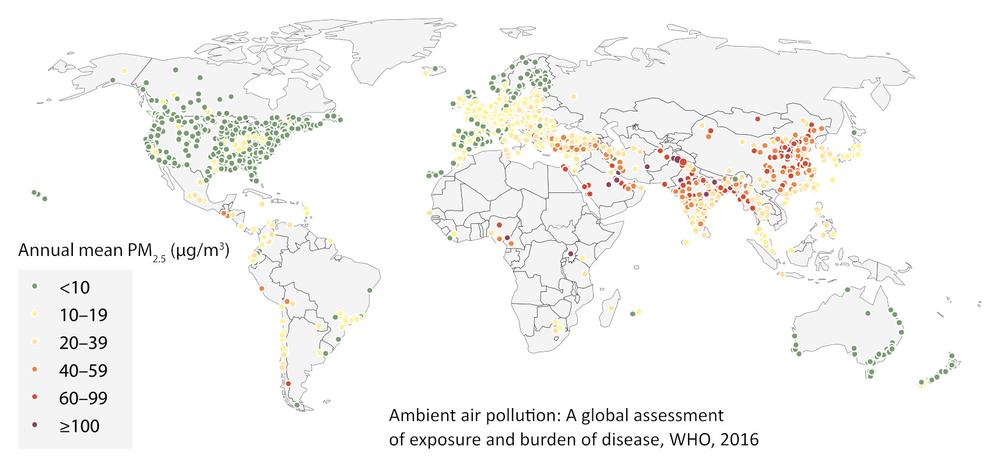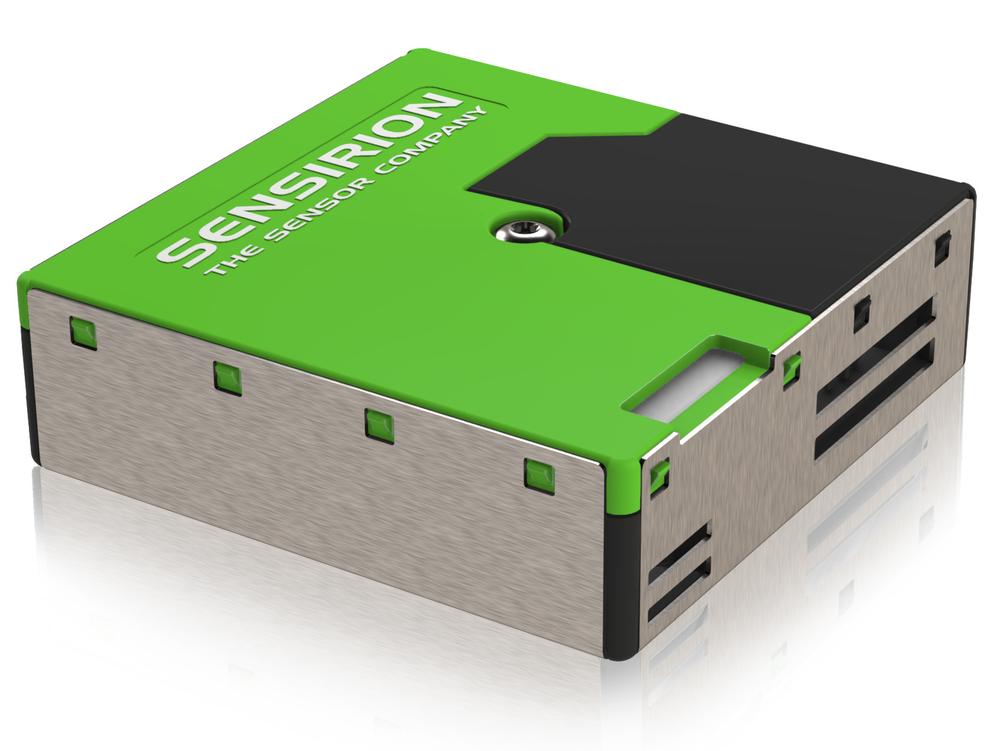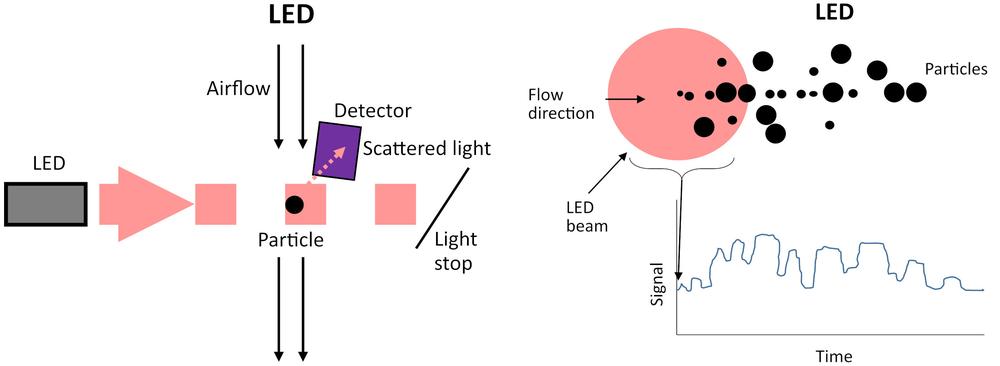Atmospheric Aerosol Particles
Also known as particulate matter (PM), aerosol particles consist of a complex mixture of solid particles and liquid droplets of organic and inorganic substances in the air.
The major components of PM are sulphates, nitrates, ammonia, sodium chloride, black carbon, mineral dust and water.
PMx Classification
x stands for particle diameter that is equal to or smaller than x μm. PM2.5, for example, defines particles with diameters that are smaller than or equal to 2.5 μm.
Health Risks
The most health-damaging particles are those with a diameter of 10 μm or less, as such small particles can penetrate the human lung barrier and enter the blood system.
“The World Health Organization (WHO) designated airborne PM as a Group 1 carcinogen. Studies showed that there is no safe level of the exposure with PM and with any concentration increase of PM in the air, the cancer rate increases proportionally.”[res.mdpi.com]
Air Pollution


Air Quality Index (AQI)
In the United States, the Environmental Protection Agency (EPA) sets standards for acceptable concentrations of PM2.5 and PM10 particulate matter through the National Ambient Air Quality Standard (NAAQS) for Particulate Matter.
[https://www.gpo.gov/fdsys/pkg/FR-2013-01-15/pdf/2012-30946.pdf]
“To date, air pollution – both ambient (outdoor) and household (indoor) – is the biggest environmental risk to health, carrying responsibility for about one in every nine deaths annually. Only one person in ten lives in a city that complies with the WHO Air quality guidelines.”

What Makes SPS30 Unique?

1. Sensirion developed an innovative technology that keeps the dust away from all sensitive parts and prevents its accumulation. This technology, along with high-quality and long-lasting components, allows SPS30 lifetime of more than eight years while operating continuously for 24 hours/day without cleaning and/or maintenance.
2. Laser-based scattering principle and advanced algorithms allow accurate measurements of mass concentration (μg/m3) and number concentration (No. of particles/cm3) for different types of dust and other particles. Lower limit of detection is 0.3um only.
a. Mass concentration: PM1.0, PM2.5, PM4 and PM10
b. Number concentration: PM0.5, PM1.0, PM2.5, PM4 and PM10
3. Fully calibrated sensor with UART and I2C interface
4. Dimensions of 40.6 x 40.6 x 12.2 mm enable easy integration into device
How Optical-Based Particulate Matter Sensors Work?
Sensors utilize the properties of light scattering to measure particle count, size, and concentration. The basic components are: light source directed at the particles, detector to measure the light scattered by the particles and electronic circuits that process and analyse the detector output.
The SPS30 is using laser technology to detect, count and measure particulate matter from PM0.5, PM1, PM2.5, PM4 to PM10 size. Alternative technology being offered in the market are using LED as light source. Below illustrations show the fundamental differences in terms of signal and measurement quality of laser and LED technology.

● Laser beam is focused to small area
● Small spot size => high power density
● Particle scatters large amount of light => large SNR
● Particles return individual signals
● Too large particles can be excluded from mass reading

● Large spot size: low power density
● Only small amount of scattered light: small SNR
● Signal of all PM in beam area sum up
● Particle size can’t be distinguished
● Too large particles can’t be excluded from mass reading
Sensirion will start SPS30 shipments at November 1 st, 2018. Pre-order the first samples now to be sure that you can start development as soon as possible.
If you are interested in other SENSIRION products, or you need more information, please do not hesitate to contact us at sensirion@soselectronic.com
Do not miss these articles
Do you like our articles? Do not miss any of them! You do not have to worry about anything, we will arrange delivery to you.


